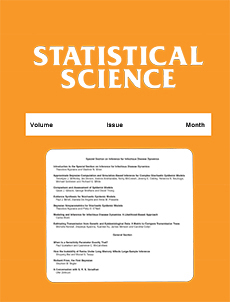Abstract
Statistical models used in geophysical, environmental, and climate science applications must reflect the curvature of the spatial domain in global data. Over the past few decades, statisticians have developed covariance models that capture the spatial and temporal behavior of these global data sets. Though the geodesic distance is the most natural metric for measuring distance on the surface of a sphere, mathematical limitations have compelled statisticians to use the chordal distance to compute the covariance matrix in many applications instead, which may cause physically unrealistic distortions. Therefore, covariance functions directly defined on a sphere using the geodesic distance are needed. We discuss the issues that arise when dealing with spherical data sets on a global scale and provide references to recent literature. We review the current approaches to building process models on spheres, including the differential operator, the stochastic partial differential equation, the kernel convolution, and the deformation approaches. We illustrate realizations obtained from Gaussian processes with different covariance structures and the use of isotropic and nonstationary covariance models through deformations and geographical indicators for global surface temperature data. To assess the suitability of each method, we compare their log-likelihood values and prediction scores, and we end with a discussion of related research problems.
Citation
Jaehong Jeong. Mikyoung Jun. Marc G. Genton. "Spherical Process Models for Global Spatial Statistics." Statist. Sci. 32 (4) 501 - 513, November 2017. https://doi.org/10.1214/17-STS620
Information





